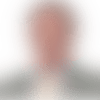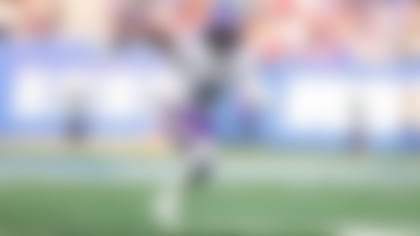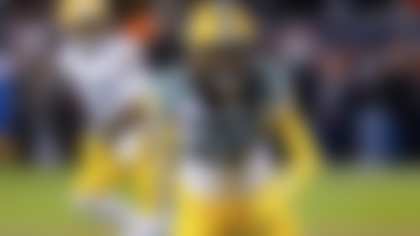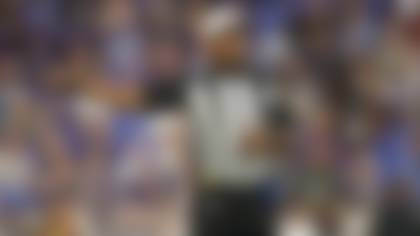If you're the general manager of a team that drafts the right quarterback -- like the Steelers, who took Terry Bradshaw in 1970, the Cowboys, who picked Troy Aikman in 1989, or the Colts, who picked Peyton Manning in 1998 -- you will feel that you have a significant practical and psychological edge over every team you face for at least a decade. That's a nice thing to take into the office, and the stadium, week in and week out.
The quintessential example of "getting it right" was what the Indianapolis Colts did in the 1998 draft. The team had just hired Bill Polian to take over football operations, and the franchise had the first pick in the draft. Polian was faced with choosing between two blue-chip quarterbacks, and though his decision may seem like it should have been obvious in retrospect, it was anything but at the time. On one hand, there was Tennessee All-American Peyton Manning -- a coach on the field and a well-known film-room junkie whose stock fell slightly during his senior year simply because his team didn't win the national title and he didn't win the Heisman Trophy. Then there was Washington State's burly Ryan Leaf, who, at 6-foot-5, 245 pounds, had the prototypical physique for a pro pocket passer. Many scouts thought Leaf was less polished than Manning but had significantly more upside. (Manning still bristles, more than a decade later, at how he felt when he was told at age 22 that he didn't have much "upside" left.)
Had the team based its decision solely on game scouting from the previous fall, the Colts likely would have selected Leaf. But in the months leading up to the draft, Polian hunkered down in his new office and spent most of his time -- roughly 500 hours -- watching film and analyzing the comparative strengths of the two quarterbacks. He and his staff watched each of Manning's 1,505 college passes and each of Leaf's 880 throws, viewing the passes from the 1997 season twice over again. From that epic act of over-analysis came a deeper level of understanding.
"From a pure scouting standpoint, you would have taken Leaf in a heartbeat," Polian said. "Now, as it turns out, when you really got into analysis, even the physical, there were perceptions about Manning that were untrue. There were perceptions about Leaf that were untrue, but your eye sees what it sees and your ear hears what it hears, so scouts came back and said, 'Manning has a weak arm.' When you analyzed every pass they threw for the years that they were in school, that wasn't true. But no scout has the ability to do that. You can only do that in the offseason, when you can put together all the film. I remember remarking to Tom Moore [the Colts' longtime offensive coordinator] how astounded I was by the fact that Peyton threw a heavier ball with many more revolutions per second than Leaf. Even the physical part of it, the initial reports were wrong, and the conventional wisdom and hype was 100 percent wrong."
And, of course, Polian's selection was 100 percent right. Manning started from his first game as a rookie; though the Colts went 3-13 that season and Manning threw 28 interceptions, it was clear that Indianapolis had its franchise quarterback.
The true difference between the two quarterbacks was clear when it came to emotional maturity and work ethic. Like everyone else, I was enamored with Leaf's physical skills and had bought into the idea that Manning lacked "upside." I was with the Vikings at the time; because both quarterbacks would be long gone by the time we selected at No. 21 (where we ended up snagging Randy Moss), evaluating them was an academic exercise for our purposes. Still, you do your homework on players like Leaf and Manning because in the age of free agency, you never knew when they might become available.
On the way to the NFL Scouting Combine, I happened to be on a flight next to Ryan Leaf, also on his way to work out at the combine. He looked a lot bigger in person than on game film, so I asked him how much he thought he weighed. He said he had not been working out as regularly as he had during the season, but guessed he weighed between 235 and 240 pounds.
The next day, as I sat in the back of the room watching the quarterbacks being weighed and measured, Leaf -- seeing a familiar face -- gave me a smile as he jumped on the scales. "Two hundred sixty-nine pounds," the scout in charge of weighing players yelled out. Leaf shot me a look of total surprise.
The next time I visited Leaf was later that year, prior to our last preseason game against the Chargers. He had looked good in the preseason and the expectations for him were sky high. I asked him how he was doing and he said, "I don't know what all the fuss is about NFL defenses. I have seen about everything they can throw at me and it's no big deal." You like confidence, but ...
Reuter: Impact QB prospects
The top three QB prospects are well established, but then what? Chad Reuter offers impact players from every tier. **More ...**
Three short years and 36 interceptions (compared to just 14 touchdown passes) later, the young Mr. Leaf realized that he didn't know what he didn't know -- and that it was a big deal. Today, the Chargers are still catching grief for drafting Leaf, which is a bit unfair. Even if you had Manning slotted above Leaf on your board (and not everyone did), almost everyone in pro football projected Leaf as a top-five pick.
At least the 1998 draft got to the 50-50 mark in terms of a hit-and-miss ratio on quarterback prospects. The very next year, Tim Couch, Donovan McNabb and Akili Smith went 1-2-3 in the draft. In the 2002 draft, the top two "can't miss" QB prospects were David Carr (No. 1 to Houston) and Joey Harrington (No. 3 to Detroit). So much for 50-50.
Part of the problem is that need warps our judgment. Former St. Louis Rams general manager Billy Devaney was part of the scouting group for the Chargers back in '98 and remembers the red flags that Leaf raised. "We did all the psychological profiles," Devaney said. "There was a guy that we hired at the Redskins -- and they're still using this guy at the combine, Harry Wachs [an optometrist who specialized in a field called visuo-cognitive evaluation]. It's a visual thing. His batting average is pretty good. We asked the Redskins if we could use him just for Ryan, and they said yes. It turned out the testing hit him to the letter. Still, we thought we could work through all that. Sometimes you can get in your own way trying to justify or refute all the different data you get."
Remember, it's not just rookies who are hard to evaluate. My first regular-season game as head coach of the Baltimore Ravens was in St. Louis in 1999. On the field before the game, I shook hands with Dick Vermeil, who wished me luck. Dick was still grieving over the season-ending injury of Trent Green two weeks earlier in the preseason, thinking that his potentially explosive offense had been shut down. He said they were going to try to get the team's third-stringer, an Arena League alum named Kurt Warner, to hold the pieces together until they could teach new backup Paul Justin the offense.
Vermeil didn't know what he had in Warner -- and that's not meant as a criticism, because nobody knew what he had. Warner was the league's MVP that season, leading the Rams to a Super Bowl win and launching a career that, after also leading the Cardinals to Super Bowl XLIII, might land him in Canton. He didn't exactly make the typical move from college to pro star. You often can't tell what sort of quarterback someone is going to be until he starts in the NFL -- and, of course, when up to a third of the league's head coaches can get fired in any given year, they can't really afford to experiment at great length. And yet, think of the Pro Bowl quarterbacks in recent years who started out as backups or retreads: Warner, Tony Romo, Matt Hasselbeck, Jeff Garcia, Trent Green, Rich Gannon, Matt Cassel, Matt Schaub. ... The list goes on.
We will almost certainly see two quarterbacks taken with the first two picks in the draft. Both Andrew Luck and Robert Griffin III are consensus "sure things." If everyone is right, the Colts and Redskins won't have to worry about the quarterback position for another 12-15 years. But that's what the Chargers were telling themselves in 1998.
Much of the material above has been adapted from the book, "More Than A Game: The Glorious Present and Uncertain Future of the NFL," written by Brian Billick and Michael MacCambridge. Follow Brian Billick on Twitter @coachbillick




